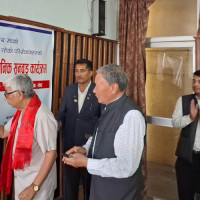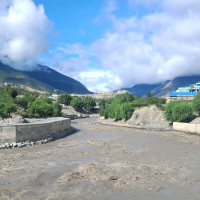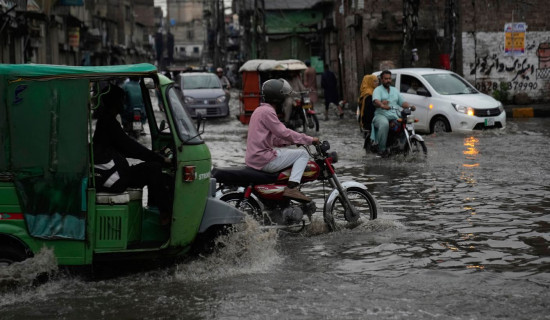- Tuesday, 1 July 2025
Wetland Conservation
Wetlands are habitats for diverse wildlife, including endangered species, which play an important role in flood control, groundwater recharge, water purification, and climate regulation. However, pollution, human encroachment, construction of infrastructure to make picnic spots, introduction of motorboats for commercial purposes, throwing drainage in water resources and overfishing have led to the shrinking of the wetlands which has significantly impacted the ecosystem and ecology.
The slogan for this year's World Wetland Day, which was marked on Sunday, is 'Protecting Wetlands for Our Common Future'. The day puts emphasis on sustainable management practices for the wetlands, reminding us of our shared responsibilities for the conservation of these vital ecosystems. We should conserve our wetlands so that the species and ecosystems dependent on those wetlands thrive, which ultimately helps the community living in its vicinity in a multitude of ways by boosting eco-tourism, environmental health and bio-diversity richness.
Betana wetland in Belbari of Morang district serves as an example of how a wetland in the area serves multiple purposes. It serves as the picnic spot for the locals, and is a home to various rare birds and aquatic species, including turtles weighing over 100 kilograms. It is also known as the breeding centre of this rare turtle species. Rescued wild animals are protected in the area, making it appear like a mini zoo. The water in this wetland irrigates over 1,000 bighas of land every year. The natural state of the lake is kept intact and no hazardous construction is carried out for the short-term benefits.
Contrary to the Belbari in eastern Nepal, the Kailali district local government in the west has granted contracts for all natural ponds and wetland in their respective municipalities. The contractors have indiscriminately used bulldozers to create artificial ponds and introduced non-native fish species with the motive of attracting tourists. This has led to the disappearance of the native species of both fish and birds and has taken a toll on the ecosystem of the wetlands of Kailai.
These two instances offer insight as an example of how the government and local levels should carry out sustainable conservation efforts. The natural state of the wetlands should not be disturbed even while carrying out the conservation efforts. Wetlands make up six per cent of the earth's surface, yet they contain over 40 per cent of species. However, wetlands are disappearing at an alarming rate, three times faster than forests due to anthropogenic activities and climate change. Wetlands near the urban centres are polluted and encroached. Likewise, more or less untouched wetlands in the Himalayan region too are getting slowly polluted because of increased human activities.
Ten wetlands of Nepal are listed as Ramsar Sites, with an area covering 60.56 hectares. Nepal boasts of a huge diversity of wetlands ranging from glacial lakes in the Himalayan region to the swamp lowlands of the Tarai. Owing to its beautiful and diverse wetlands, thousands of tourists come to Nepal for bird watching and research every year. Conservation of wetlands is very important because it is the home to thousands of species and our socioeconomic life in one or the other way is linked with the wetlands. Birds from as far as Siberia come to the wetlands of Nepal each year during winter to be safe from the harsh winter back home and hatch their fledglings. The coordinated efforts of the three tiers of the government, along with the efforts of national and international organisations is a must for the conservation of these wetlands to enrich human lives.
















